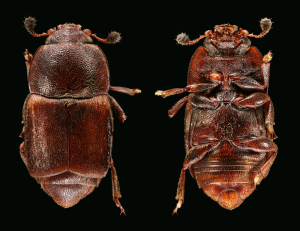Species Fact Sheet
Caplothorax sayi (Parsons, 1943)
Diagnosis: Caplothorax sayi specimens are distinguished from other eastern North American species by having the following combination of features: length measured from mandibles to abdominal apex 4.3-5.1 mm, antennomere coloration abruptly or gradually darker towards the club, and the pronotum posterior angles broadly rounded with no distinct ‘corner’ created. Males also have a pair of elongate oval depressions lateral and anterior to the supplementary segment on the 5th ventrite (Fig. 5). Females also have a weak median longitudinal ridge on the pygidium (Fig. 7 & 8) and grooves along the lateral margins of the pygidium (Fig. 7).
Distribution: Caplothorax sayi is found in eastern North America from Nova Scotia to Georgia and west from Saskatchewan to Texas and New Mexico.
Biology: C. sayi is primarily associated with wounds on hardwood trees (Connell, 1956). It is one of the primary nitidulid vectors of the oak wilt pathogen Ceratocystis fagacearum in Minnesota, transporting spores from oak wilt mats to fresh wounds on uninfected trees (Juzwick, Skalbeck, and Neuman, 2004). C. sayi has also been collected in traps baited with banana, fermenting brown sugar and bread dough, and cantaloupe (Price and Young, 2006).
References:
Connell WA (1956) – Adult description and notes on habits
Juzwik J, Skalbeck TC, Neuman MF (2004) – association with wounded oaks and transmission of oak wilt fungus
Price MB, Young DK (2006) – collection records
Double-click on images to enlarge
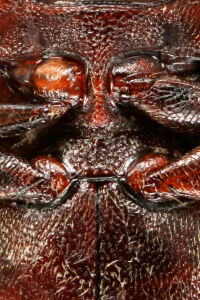
Figure 2. Prosternum and mesosternum (ventral view)

Figure 3. Male pygidium (dorsal view)
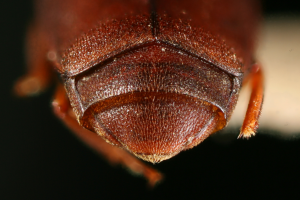
Figure 4. Male pygidium (dorsoposterior view)
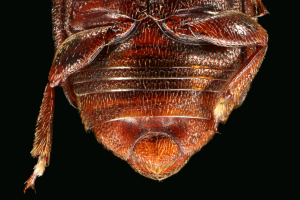
Figure 5. Male supplementary segment, 5th ventrite with distinctive depression on either side (ventral view)
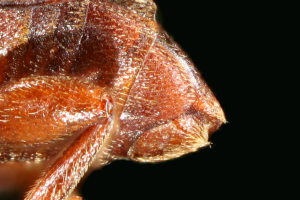
Figure 6. Male supplementary segment (ventrolateral view)

Figure 7. Female pygidium with weak median longitudinal ridge and grooves along lateral margin (dorsoposterior view)
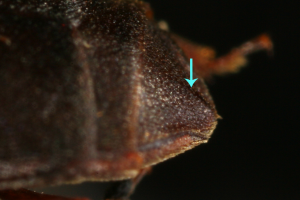
Figure 8. Female pygidium. Arrow denoting weak median longitudinal ridge (dorsolateral view)

Figure 9. Female pygidium apex (posterior view)

Figure 10. Female pygidium (lateral view)
HOW TO CITE THIS WORK:
DiLorenzo, C.L., G.S. Powell, A.R. Cline, and J.V. McHugh (2021) Carpophiline-ID, a taxonomic web resource for the identification of Carpophilinae (Nitidulidae) of eastern North America. (vers. 01.19.2021) University of Georgia, retrieved from https://site.caes.uga.edu/carpophiline-id/
